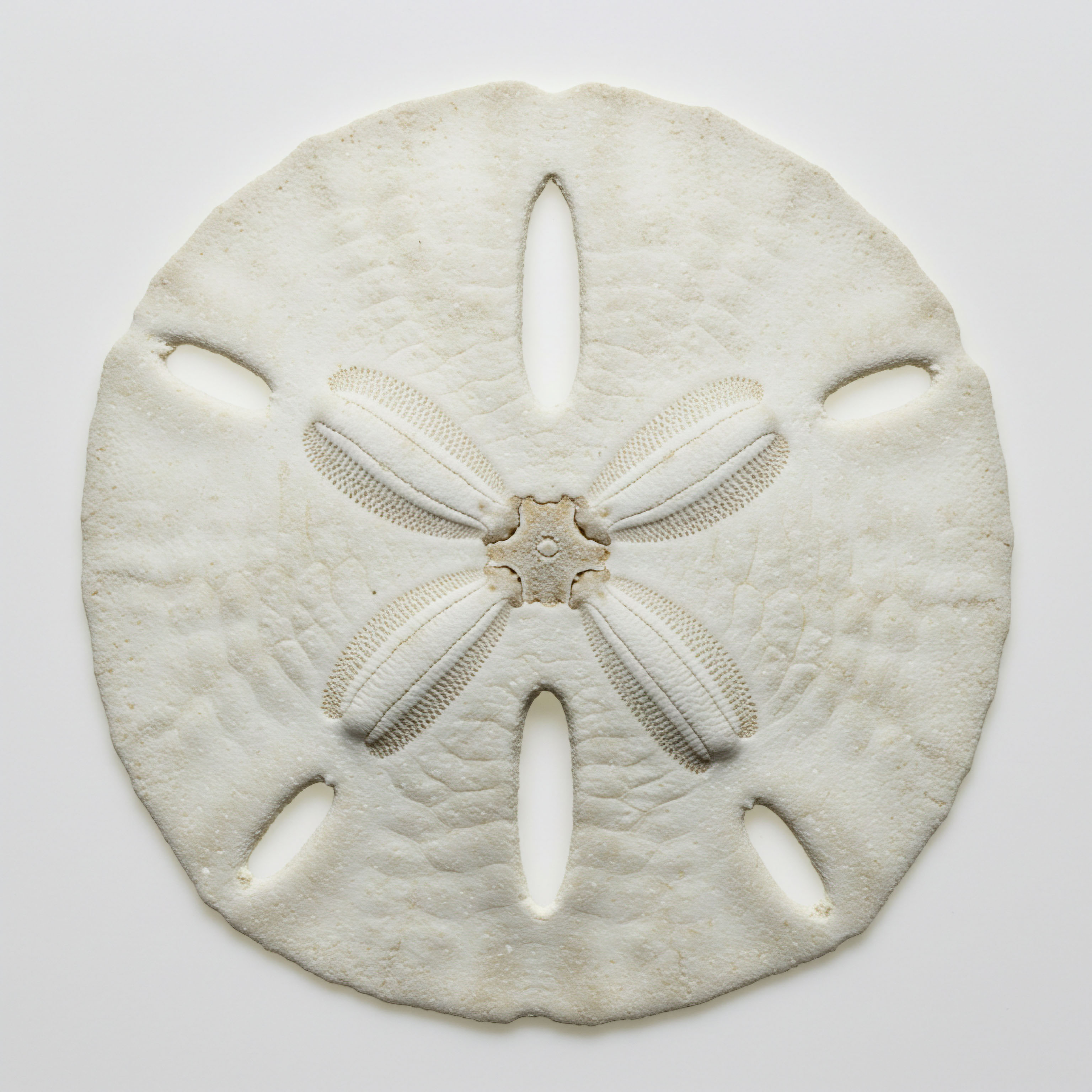

Fundamentals
Many individuals experience a subtle yet persistent shift in their physical presentation, noticing that their skin appears less vibrant, perhaps losing some of its youthful firmness, or that the subtle definition of their musculature, once readily apparent, seems to soften.
This often comes with a sense that the body is not responding to efforts in the same way it once did, despite consistent dedication to well-being. It is a deeply personal observation, a quiet question about why the reflection in the mirror no longer quite aligns with the internal sense of vitality.
This feeling of disconnect, where the external appearance seems to betray the internal drive, is a common thread in the human experience of aging and physiological change. Understanding the underlying biological mechanisms can provide clarity and a path toward reclaiming that lost aesthetic and functional capacity.
The body operates through an intricate network of chemical messengers, a sophisticated internal communication system known as the endocrine system. Hormones, the agents of this system, are secreted by specialized glands and travel through the bloodstream to target cells, orchestrating a vast array of physiological processes.
These processes extend far beyond reproductive function, influencing metabolism, mood, energy levels, and critically, the integrity and appearance of tissues like the skin and the visibility of vascular structures. When these hormonal signals become imbalanced, the systemic effects can manifest in ways that directly impact physical aesthetics, leading to changes in skin quality and vascular definition.

Hormonal Messaging and Tissue Health
The skin, the body’s largest organ, serves as a dynamic interface with the external world, constantly undergoing renewal and repair. Its structural integrity, elasticity, and overall appearance are profoundly influenced by hormonal signaling. Hormones regulate the production of key dermal components, including collagen and elastin, which provide the skin with its strength and resilience.
They also influence the activity of sebaceous glands, affecting oil production and hydration, and play a role in the microcirculation that nourishes skin cells and contributes to a healthy complexion.
Vascularity, the prominence of superficial blood vessels, is a visual indicator of circulatory efficiency and muscle definition. While influenced by factors such as body fat percentage and hydration, hormonal status plays a significant, often overlooked, role. Hormones can affect blood vessel tone, endothelial function, and fluid balance, all of which contribute to how visible and defined the vascular network appears beneath the skin.
A robust hormonal environment supports optimal blood flow and tissue perfusion, which are essential for both skin health and vascular prominence.
Hormones act as vital messengers, orchestrating the body’s functions, including the health and appearance of skin and blood vessels.

The Endocrine System’s Influence on Aesthetics
Consider the role of specific hormonal pathways. Androgens, such as testosterone, are well-known for their anabolic effects, promoting muscle protein synthesis and reducing adipose tissue. This directly contributes to a more defined physique, which in turn enhances the visibility of underlying vascularity.
Testosterone also influences skin thickness and collagen content, contributing to a firmer, more youthful dermal structure. Estrogens, while often associated with female physiology, also play a role in skin hydration, elasticity, and wound healing in both sexes. A decline in these hormones can lead to thinner, drier skin with reduced elasticity.
Thyroid hormones regulate metabolic rate across virtually all tissues, including the skin. Hypothyroidism, a state of insufficient thyroid hormone, can result in dry, coarse skin, hair loss, and a puffy appearance due to fluid retention. Conversely, optimal thyroid function supports a healthy metabolic turnover in skin cells, contributing to a clear and vibrant complexion. The delicate balance of these and other hormones collectively dictates the cellular environment that supports optimal skin structure and vascular presentation.

Interconnectedness of Hormonal Pathways
The endocrine system operates not as isolated glands but as an interconnected symphony. The hypothalamic-pituitary-gonadal (HPG) axis, for instance, regulates the production of sex hormones. Disruptions at any point along this axis can cascade into systemic imbalances. Similarly, the adrenal glands, responsible for cortisol production, are intimately linked with sex hormone synthesis and metabolic regulation. Chronic stress, leading to elevated cortisol, can negatively impact collagen synthesis and promote fluid retention, detracting from skin quality and vascular definition.
Understanding these foundational connections provides a framework for appreciating how a seemingly subtle hormonal shift can have widespread implications, extending to the very surface of the body. The goal is not merely to address symptoms but to recalibrate the underlying biological systems, allowing the body to express its full potential for vitality and aesthetic clarity.


Intermediate
When individuals seek to restore the defined skin and vascularity that may have diminished over time, a deeper understanding of specific clinical protocols becomes essential. These interventions are not simply about addressing isolated symptoms; they represent a strategic recalibration of the body’s internal messaging systems. The approach involves targeted applications of hormonal optimization and peptide therapies, designed to restore physiological balance and support the tissues responsible for aesthetic presentation.

Targeted Hormonal Optimization Protocols
Hormone replacement therapy (HRT) protocols are tailored to individual physiological needs, considering factors such as age, sex, and specific hormonal deficiencies identified through comprehensive laboratory analysis. The aim is to restore hormone levels to a healthy, functional range, thereby supporting systemic well-being, which includes dermal integrity and vascular tone.

Testosterone Replacement Therapy for Men
For men experiencing symptoms associated with declining testosterone levels, often referred to as andropause or hypogonadism, testosterone replacement therapy (TRT) can be a transformative intervention. A standard protocol frequently involves weekly intramuscular injections of Testosterone Cypionate, typically at a concentration of 200mg/ml. This exogenous testosterone helps to restore circulating levels, promoting muscle protein synthesis, reducing body fat, and enhancing a more defined physique.
To maintain the body’s intrinsic testicular function and preserve fertility, the protocol often incorporates Gonadorelin. This peptide, administered via subcutaneous injections twice weekly, stimulates the pituitary gland to release luteinizing hormone (LH) and follicle-stimulating hormone (FSH), which are crucial for endogenous testosterone production and spermatogenesis.
Additionally, to mitigate potential side effects such as the conversion of testosterone to estrogen, an aromatase inhibitor like Anastrozole may be prescribed as an oral tablet, typically twice weekly. This helps to manage estrogen levels, preventing water retention and supporting a leaner appearance that enhances vascular visibility. Some protocols also include Enclomiphene to further support LH and FSH levels, particularly when fertility preservation is a primary concern.
Testosterone replacement in men can restore muscle definition and reduce body fat, enhancing vascularity and skin quality.

Testosterone Replacement Therapy for Women
Women, particularly those in pre-menopausal, peri-menopausal, or post-menopausal stages, can also experience symptoms related to suboptimal testosterone levels, including irregular cycles, mood fluctuations, hot flashes, and diminished libido. For these individuals, testosterone optimization protocols are carefully designed to provide therapeutic benefits without inducing virilizing effects.
A common approach involves weekly subcutaneous injections of Testosterone Cypionate, administered in very low doses, typically 10 ∞ 20 units (0.1 ∞ 0.2ml). This precise dosing aims to restore physiological levels, supporting energy, mood, and tissue health. Progesterone is often prescribed alongside testosterone, with the specific dosage and administration method (oral, topical, or vaginal) determined by the woman’s menopausal status and individual needs.
Progesterone plays a vital role in uterine health, sleep quality, and mood regulation. For some women, long-acting testosterone pellets may be considered, offering sustained release over several months. Anastrozole may be included with pellet therapy when appropriate, particularly if there is a tendency for estrogen levels to rise excessively.
How Do Hormonal Protocols Differ for Men and Women?
The distinctions in these protocols underscore the sex-specific physiological roles of hormones and the importance of individualized treatment plans. While both men and women benefit from optimized testosterone levels, the dosages, co-administered medications, and overall therapeutic goals vary significantly to align with distinct biological requirements and symptom profiles.
| Agent | Primary Action | Relevance to Skin and Vascularity |
|---|---|---|
| Testosterone Cypionate | Androgen receptor activation, protein synthesis | Increases muscle mass, reduces body fat, improves skin thickness and collagen content, enhances vascular visibility. |
| Gonadorelin | Stimulates LH/FSH release from pituitary | Maintains endogenous hormone production, supports overall endocrine balance. |
| Anastrozole | Aromatase inhibition | Reduces estrogen conversion, minimizes water retention, supports leaner physique. |
| Progesterone | Progestogenic receptor activation | Supports skin hydration, elasticity, and overall hormonal balance in women. |

Growth Hormone Peptide Therapy
Beyond traditional HRT, targeted peptide therapies offer another avenue for physiological optimization, particularly for active adults and athletes seeking anti-aging benefits, muscle gain, fat loss, and improved sleep quality. These peptides work by stimulating the body’s natural production of growth hormone (GH), avoiding the direct administration of exogenous GH, which can have more pronounced side effects.
Key peptides in this category include Sermorelin, a growth hormone-releasing hormone (GHRH) analog that stimulates the pituitary to release GH. Similarly, Ipamorelin and CJC-1295 (often combined) are GHRH mimetics that promote a sustained, pulsatile release of GH. Tesamorelin is another GHRH analog, specifically recognized for its ability to reduce visceral adipose tissue.
Hexarelin, a GH secretagogue, also stimulates GH release. MK-677, an oral GH secretagogue, offers a non-injectable option for increasing GH and IGF-1 levels. These peptides collectively support cellular repair, collagen synthesis, and metabolic efficiency, all of which contribute to improved skin texture, elasticity, and a more defined physique that accentuates vascularity.
Growth hormone-releasing peptides can enhance cellular repair and metabolic efficiency, improving skin and vascular appearance.

Other Targeted Peptides for Specific Concerns
The precision of peptide therapy extends to addressing highly specific physiological needs. For sexual health, PT-141 (Bremelanotide) acts on melanocortin receptors in the brain to stimulate sexual arousal, offering a non-hormonal option for addressing libido concerns that can be intertwined with overall vitality.
For tissue repair, healing, and inflammation management, Pentadeca Arginate (PDA) is utilized. This peptide supports cellular regeneration and modulates inflammatory responses, which can indirectly benefit skin health by promoting faster recovery from micro-damage and reducing chronic inflammation that might detract from skin clarity and overall tissue quality.
These targeted interventions represent a sophisticated approach to restoring physiological balance. They acknowledge the complex interplay of hormones and peptides in maintaining not only internal health but also the external manifestations of vitality, such as defined skin and visible vascularity.


Academic
The intricate relationship between hormonal balance and the visible attributes of defined skin and vascularity extends into the deepest layers of cellular and molecular biology. A truly comprehensive understanding necessitates a systems-biology perspective, analyzing how the endocrine system, metabolic pathways, and cellular signaling cascades converge to influence dermal integrity and vascular tone. This exploration moves beyond superficial explanations, delving into the mechanistic underpinnings that dictate aesthetic presentation.

Endocrine Axes and Dermal Remodeling
The skin is a highly metabolically active organ, constantly undergoing remodeling and repair. This dynamic process is under precise hormonal control. The hypothalamic-pituitary-adrenal (HPA) axis, often associated with stress response, also plays a role in skin health. Chronic activation of the HPA axis leads to sustained elevation of cortisol.
While cortisol is essential for life, chronic excess can suppress collagen synthesis by inhibiting fibroblast activity and increasing collagen degradation through matrix metalloproteinase (MMP) activation. This catabolic effect directly compromises dermal structural integrity, leading to thinner, less resilient skin and a diminished capacity for repair.
How Does Chronic Stress Affect Skin and Vascularity?
The HPG axis, central to sex hormone production, exerts profound effects on skin composition. Androgens, particularly testosterone, stimulate fibroblast proliferation and collagen production in the dermis, contributing to skin thickness and elasticity. Testosterone also influences sebaceous gland activity, which, when balanced, supports healthy skin hydration and barrier function.
A decline in androgenic signaling, common with aging in both sexes, correlates with reduced dermal collagen content and a propensity for skin thinning and wrinkling. Estrogens, conversely, enhance skin hydration by increasing hyaluronic acid content and improving barrier function. They also support microcirculation, which is vital for nutrient delivery and waste removal in the skin, directly influencing its radiance and health.
Hormonal axes, including HPA and HPG, profoundly influence skin structure and vascular appearance through cellular mechanisms.

Metabolic Interplay and Vascular Tone
Vascularity, the visible network of superficial veins, is a function of several factors, including subcutaneous fat levels, muscle definition, and the tone of the blood vessels themselves. Hormones exert significant control over metabolic processes that indirectly and directly influence these factors. Insulin sensitivity, a key aspect of metabolic health, is modulated by various hormones.
Insulin resistance, a state where cells become less responsive to insulin, can lead to increased adipose tissue deposition, particularly visceral fat, which obscures underlying muscle and vascular definition. Hormones like testosterone and growth hormone peptides improve insulin sensitivity, promoting a leaner body composition and enhancing the visibility of vascular structures.
The endothelium, the inner lining of blood vessels, is a critical regulator of vascular tone and health. Hormones such as nitric oxide (NO), produced by endothelial cells, are potent vasodilators, promoting blood flow and contributing to vascular prominence. Testosterone has been shown to improve endothelial function and NO bioavailability, supporting healthy vasodilation. Conversely, hormonal imbalances, such as chronic inflammation or oxidative stress, can impair endothelial function, leading to vasoconstriction and reduced vascular visibility.
| Hormone/Peptide | Primary Mechanism of Action | Impact on Skin Definition | Impact on Vascularity |
|---|---|---|---|
| Testosterone | Stimulates collagen synthesis, increases muscle mass, reduces adipose tissue. | Improved skin thickness, firmness, and elasticity. | Enhanced visibility due to reduced fat and increased muscle definition. |
| Estrogen | Increases hyaluronic acid, improves barrier function, supports microcirculation. | Enhanced hydration, elasticity, and overall skin radiance. | Supports healthy blood flow and capillary integrity. |
| Growth Hormone Peptides | Stimulate GH/IGF-1, promote cellular repair, lipolysis. | Improved collagen production, cellular turnover, and skin texture. | Reduced subcutaneous fat, leading to greater vascular prominence. |
| Cortisol (Chronic Excess) | Inhibits fibroblast activity, increases collagen degradation. | Reduced skin thickness, elasticity, and impaired repair. | Can promote fluid retention, obscuring vascular definition. |

Cellular Signaling and Aesthetic Expression
At the cellular level, hormones exert their effects by binding to specific receptors, initiating complex intracellular signaling cascades. For instance, testosterone binds to androgen receptors (ARs) present in fibroblasts, keratinocytes, and endothelial cells. This binding activates gene transcription, leading to the synthesis of proteins essential for skin structure and vascular function.
Similarly, growth hormone peptides stimulate the release of growth hormone, which then signals through the GH receptor and subsequently increases insulin-like growth factor 1 (IGF-1) production. IGF-1 is a potent anabolic hormone, promoting cell proliferation, collagen synthesis, and lipolysis, all contributing to a more defined and youthful appearance.
What Are the Cellular Mechanisms Behind Hormonal Skin Effects?
The interplay extends to the extracellular matrix (ECM), the non-cellular component of tissues that provides structural support. Hormones regulate the synthesis and degradation of ECM components like collagen, elastin, and proteoglycans. Imbalances can disrupt this delicate equilibrium, leading to a compromised ECM that manifests as sagging skin, reduced elasticity, and a less defined surface.
The systemic influence of hormones on inflammation and oxidative stress also plays a role. Chronic low-grade inflammation can accelerate skin aging and impair vascular health, while optimal hormonal balance supports antioxidant defenses and reduces inflammatory markers.
This deep dive into the molecular and cellular mechanisms underscores that defined skin and vascularity are not merely superficial traits. They are external reflections of internal physiological harmony, meticulously orchestrated by the endocrine system. Understanding these complex interactions provides a scientific basis for personalized wellness protocols aimed at restoring not just appearance, but fundamental biological function.

References
- Bhasin, Shalender, et al. “Testosterone Therapy in Men With Hypogonadism ∞ An Endocrine Society Clinical Practice Guideline.” Journal of Clinical Endocrinology & Metabolism, vol. 99, no. 9, 2014, pp. 3489 ∞ 3510.
- Davis, Susan R. et al. “Testosterone in Women ∞ The Clinical Significance.” Lancet Diabetes & Endocrinology, vol. 2, no. 12, 2014, pp. 980 ∞ 992.
- Guyton, Arthur C. and John E. Hall. Textbook of Medical Physiology. 13th ed. Elsevier, 2016.
- Boron, Walter F. and Emile L. Boulpaep. Medical Physiology. 3rd ed. Elsevier, 2017.
- Krzysik, Michael, and Janusz S. Czubek. “Testosterone and Skin ∞ A Review of the Effects of Androgens on the Skin and Its Appendages.” Journal of Clinical Dermatology, vol. 18, no. 3, 2019, pp. 201 ∞ 215.
- Giustina, Andrea, et al. “Growth Hormone and Aging ∞ The Role of Growth Hormone Secretagogues.” Endocrine Reviews, vol. 38, no. 5, 2017, pp. 433 ∞ 459.
- Calle, Eugenia E. et al. “Body-Mass Index and Mortality in a Prospective Cohort of U.S. Adults.” New England Journal of Medicine, vol. 341, no. 15, 1999, pp. 1097 ∞ 1105.
- Swerdloff, Ronald S. et al. “Long-Term Testosterone Therapy in Men With Hypogonadism ∞ A Systematic Review and Meta-Analysis.” Journal of Clinical Endocrinology & Metabolism, vol. 104, no. 1, 2019, pp. 1 ∞ 15.
- Nussey, Stephen, and Saffron Whitehead. Endocrinology ∞ An Integrated Approach. BIOS Scientific Publishers, 2001.
- Fauci, Anthony S. et al. Harrison’s Principles of Internal Medicine. 20th ed. McGraw-Hill Education, 2018.

Reflection
Observing changes in one’s skin and the visibility of vascular structures can be a deeply personal experience, often prompting questions about underlying health. This exploration into hormonal influences provides a framework for understanding these shifts, moving beyond superficial concerns to the fundamental biological processes at play.
The knowledge that our internal chemistry profoundly shapes our external presentation offers a powerful perspective. It suggests that addressing the root causes of physiological imbalance can lead to a restoration of vitality that is visible and deeply felt.
The journey toward optimal health is highly individualized, reflecting the unique symphony of each person’s biological systems. This understanding of hormonal interplay is not an endpoint but a beginning ∞ a guide to recognizing the body’s signals and seeking precise, evidence-based support.
It encourages a proactive stance, where informed choices about wellness protocols become a pathway to reclaiming a sense of self and functional capacity. The path to revitalized skin and enhanced vascularity is a testament to the body’s remarkable capacity for healing and adaptation when provided with the right internal environment.



